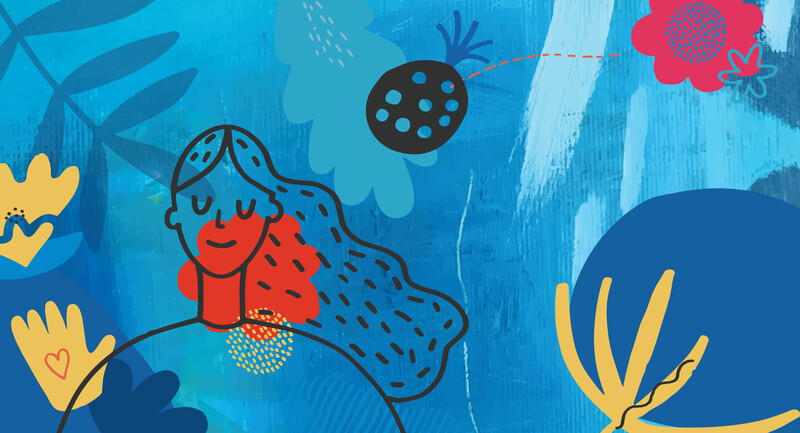Everyone knows Albert Einstein was a brilliant physicist who revolutionized concepts of space and time, pioneered groundbreaking theories on relationships between matter and energy, and epitomized the eccentricity of genius with his wild, unkempt hair.
But how many know that he also flunked his first college entrance exam?
In 1895, the 16-year-old Einstein applied to the Federal Polytechnic School in Zurich, Switzerland. Although he did well in the math and science portions of the test, he failed because of poor showings in nonscience areas in which he supposedly had little interest.
Every teacher understands that brilliant students sometimes fail because they lose interest. "Good teachers know that students have to be engaged to learn," says Todd Johnson, a behavior-management consultant with Rivertown Consultants in Grandville, Mich. "If kids don't see value in what they're being taught, they won't learn."
Most teachers know that keeping students engaged is a quixotic challenge at best. According to Judith Brough, education professor at Gettysburg College in Pennsylvania, the average middle school student's attention span lasts only 11 minutes in a 50- or 60-minute class. Multiply that by 20 or 30 students to get a pretty good picture of the challenge teachers face. "We know [students] can't sit quietly for 20 minutes, but are we structuring our classes so they're congruent with what we know?" Brough asks.
Put another way, what can teachers do to manage their classrooms effectively to ensure maximum learning and minimal disruption?
Start Before You Begin
Behavior specialists and educators say that successful classroom management starts at the beginning of the school year—or even before.
"One superintendent I knew went into a very tough neighborhood and had every member of the faculty call five parents before the school year began to tell them how much they were looking forward to working with that parent's child," says Al Arth, professor of education at the University of Nebraska-Lincoln. "That helped start the year off on a positive note" and served as a stepping-stone for teachers to build rapport with parents before the first day of school even arrived.
Many experts echo this emphasis on positive preventive measures. "Ninety percent of classroom management happens before kids ever act out," says Rick Smith, an education consultant with Conscious Teaching in Fairfax, Calif. "You want to focus on prevention strategies and ways that teachers can make classrooms run smoothly before there's even a problem."
Arth, Smith, and others say that effective classroom management is built every day through teachers' concerted interactions with their students. "I always tell people to greet their kids at the door," Arth continues. "Say hello and add something specific if you can, something general if you can't." It helps build stronger relationships that prevent problems before they start and ensure smoother sailing for both student and teacher.
Elusive Magic Dust
Successful classroom management requires patience, effort, and—above all else—time.
"For my first two years, I thought I was the worst teacher," Johnson recalls. He struggled with classroom management during his early years and wondered why experienced teachers seemed to have a gift for getting kids to do what they wanted. "Other teachers had that "magic dust" that could make their kids behave." Johnson didn't. Time and experience taught him a lot, but even senior teachers need time to manage their classrooms effectively. Students need time to learn what their teachers expect of them, and teachers need it to learn about their students.
That time can pay enormous benefits, especially when dealing with difficult pupils. Smith cites the strategies of student-motivation authority Raymond Wlodkowski, who discovered that when teachers consciously had personal conversations with students for two minutes at a time over 10 days—what he calls the "two minute intervention"—they saw an 85 percent improvement in classroom management for that student. "This admittedly seems counter-intuitive if you're talking about your most frustrating kids," Smith admits, "but you should look at the situation like a cramped muscle. Kids wanta positive personal connection with an adult authority figure, and when they get that over time, the muscle relaxes and they can focus on learning." An added benefit: The method also has a positive influence on the rest of the class.
Good teachers know that connecting with students also means thoroughly understanding what students did or didn't learn before coming to class. Teachers who don't pre-test risk alienating high- and low-performing students if they teach toward the middle, and that usually leads to problems. Bored students will find outlets for their frustrations. "If you have 24 students in your classroom, you might need three different assignments, because you need to meet the needs of different kids differently," says Kathleen Wheeler, associate professor of education at York College in Nebraska.
Step by Step
Despite teachers' best efforts, every student wanders at one time or another. When that happens, teachers need a set of prepared strategies ready for use. The best responses use the minimal amount of power necessary to correct wayward behavior.
Johnson outlines three levels of intervention. They begin with nonverbal actions and move to more severe methods if transgressions continue.
Low-Level Intervention (Nonverbal)
- "The Look": Giving students a stare while not stopping a lecture tells them immediately that they are being watched.
- Gesturing: Making a hand motion or snapping fingers signals that the disruptive behavior must stop.
- Proximity: Simply moving close to students can curtail unwanted conversations. "This makes the student uncomfortable," Johnson says. "Just walk back and continue lecturing while next to them."
Second Level Intervention (Verbal)
- Disrupting behavior with humor: If a teacher spots a student passing a note, she can confront without chastising. “That note says you have a wonderful teacher and love my class, right?” Johnson suggests. Self-deprecating humor that stings without drawing blood is the goal.
- Stating the obvious: Rather than hushing a student, the teacher can simply say, “John, you're talking.” If the student protests or tries to argue, this becomes a second transgression on top of the initial one and can lead to a private conference.
- The private conference: If transgressions continue, the teacher can call the student aside after class to discuss the consequences of disruptive behavior. “Never argue with the student in front of the class,” Johnson warns. That rewards the student with attention and puts him or her on equal footing with the teacher, a no-win situation.
Third Level Intervention (Action)
- Behavioral contracts: Both the teacher and student sign these. The teacher “guides” the student during drafting of the contract so it represents a mutually determined set of rules rather than a dictated code of behavior.
- Choices: If disruptive behavior continues, the student can be given the “choice” of going to the office immediately or after class. (A third choice might involve having the principal come and escort the student personally.) The most important thing is to stay calm and pick your battles, Johnson advises. “The kid wants to set you off,” he says. Avoid that at all costs.
In addition to "do's," Johnson also has a list of equally critical "don'ts" for teachers. For example, belittling or bullying students and making idle threats doesn't work; neither does trying to be the "cool" teacher or every student's friend. "Kids see right through that," he adds. "You're their teacher, not their friend."
Know the Limits
When trying to manage their classrooms to promote learning, perhaps the most notable mistake made by many teachers is simply trying too hard. These are my kids, I have to reach them, is an understandable perspective. In the end, experts say that teachers can only influence behavior; the rest is up to the student. According to Johnson, systems—not teachers—change student behavior.
Teachers who try incessantly to reach difficult students sometimes must recognize the limits of their persuasive powers, a fact that is easy to acknowledge in theory but difficult to accept in practice. "Discipline is an art, not a science," Johnson says. "No one will ever have one answer to discipline questions. There is no magic bullet. It's always about the relationships that you build."








